Believe it or not, some of the best art in the world is free.
You may not be able to hang it on your wall or revel in it at a revered museum, but outdoor art has gained popularity in recent years. Cities have been pushing to beautify and embrace the creativity of their citizens, bringing them art where they least expect it. In a truly fortuitous meeting between a pedestrian and a work of art, familiar scenes turn beautifully strange, and the commonplace becomes positively transcendent.
Inspired by all the unexpected places the new Lincoln MKC could take you, we’ve partnered with Lincoln to bring you art installations in the wild waiting to be discovered. Read on to see where these wonders can be found and gain insight into what the creators say inspired them.

Why do you work with LEGO toys?
I like using this plastic toy because so many people can relate to it. I think that art needs to permeate our lives in as many ways as possible. […] My hope is that after experiencing my works, people go home and try their hand at creativity, whether in LEGO or any other medium.
How does the natural landscape play into your work?
When I tag the city with LEGO Hugman, these figures can be found hugging trees, signs, bike racks or fences. It’s important to have the figures interacting with the landscape and the fabric of the city. The urban setting is a fantastic contrast against the bright colors of my art.
Have you received any funny or unusual feedback about your art?
People react strongly to my work because of the medium. They connect to it because there is such a familiarity with the bricks. With my outdoor art, I love it when people are surprised by it. They often will tweet or Instagram a photo of the work, which then leads to more interaction with the art ... and the artist, if they tag me.
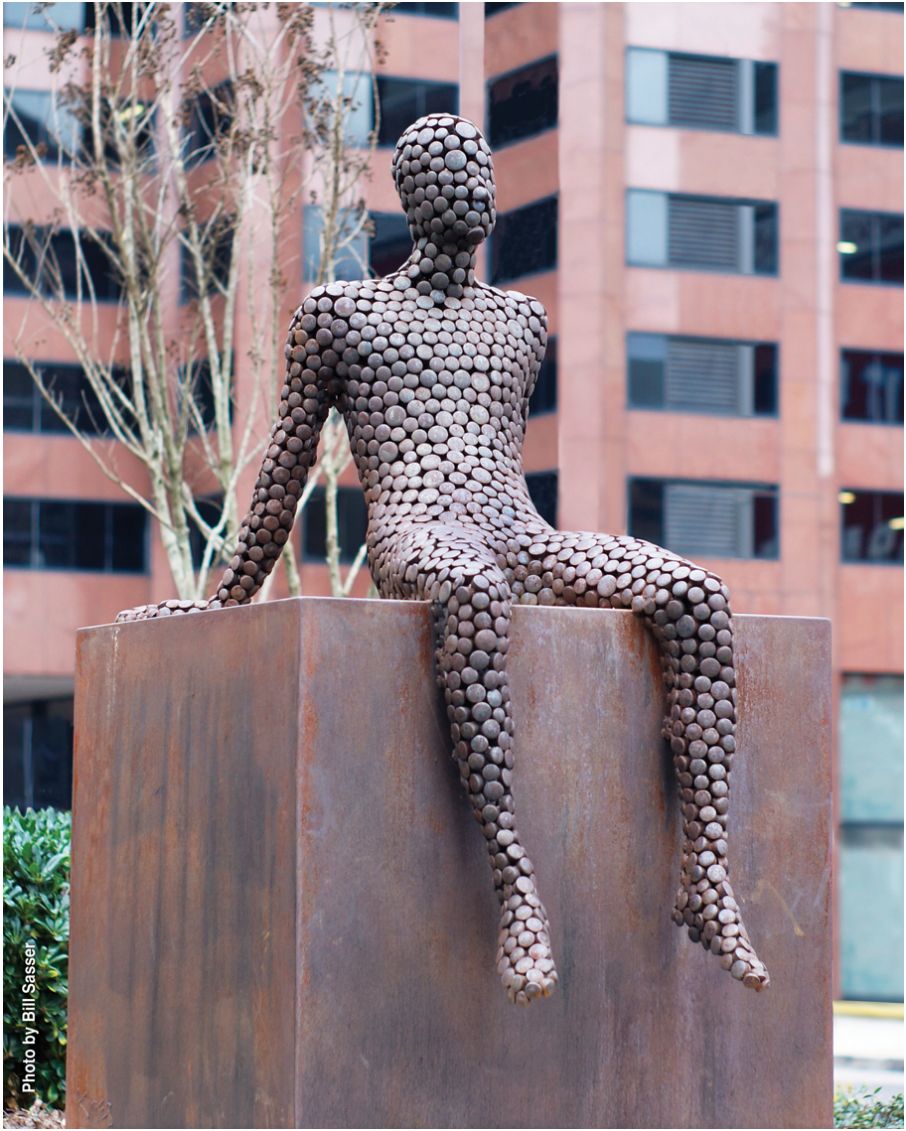
Jason Kimes currently has two sculptures on display on one of the main streets in New Orleans. The human figures are located about 100 feet apart and face each other. Kimes says he imagines that the two figures are having a telepathic dialogue.
Where have you displayed public art? Why are these places good ones for public art? I've displayed work in traditional settings such as university campuses (where one expects to see public art on display) and in municipal downtown settings where sidewalk traffic comes into close contact with the sculpture and transportation depots. [...] I very much like the sidewalk and terminal entrance sites because the work is so directly approachable by the public, providing for very intimate and sometimes funny interactions.
What are the benefits of displaying your art outdoors versus in a gallery or museum? Basically, everything a gallery is, an outdoor setting is not -- and vice versa. Outdoor art is viewed predominantly by an audience unsophisticated in the viewing of fine art. Public art competes with every sound, color, movement, and any one of a thousand other distractions pulling a viewer's attention away from a still and quiet work of art.
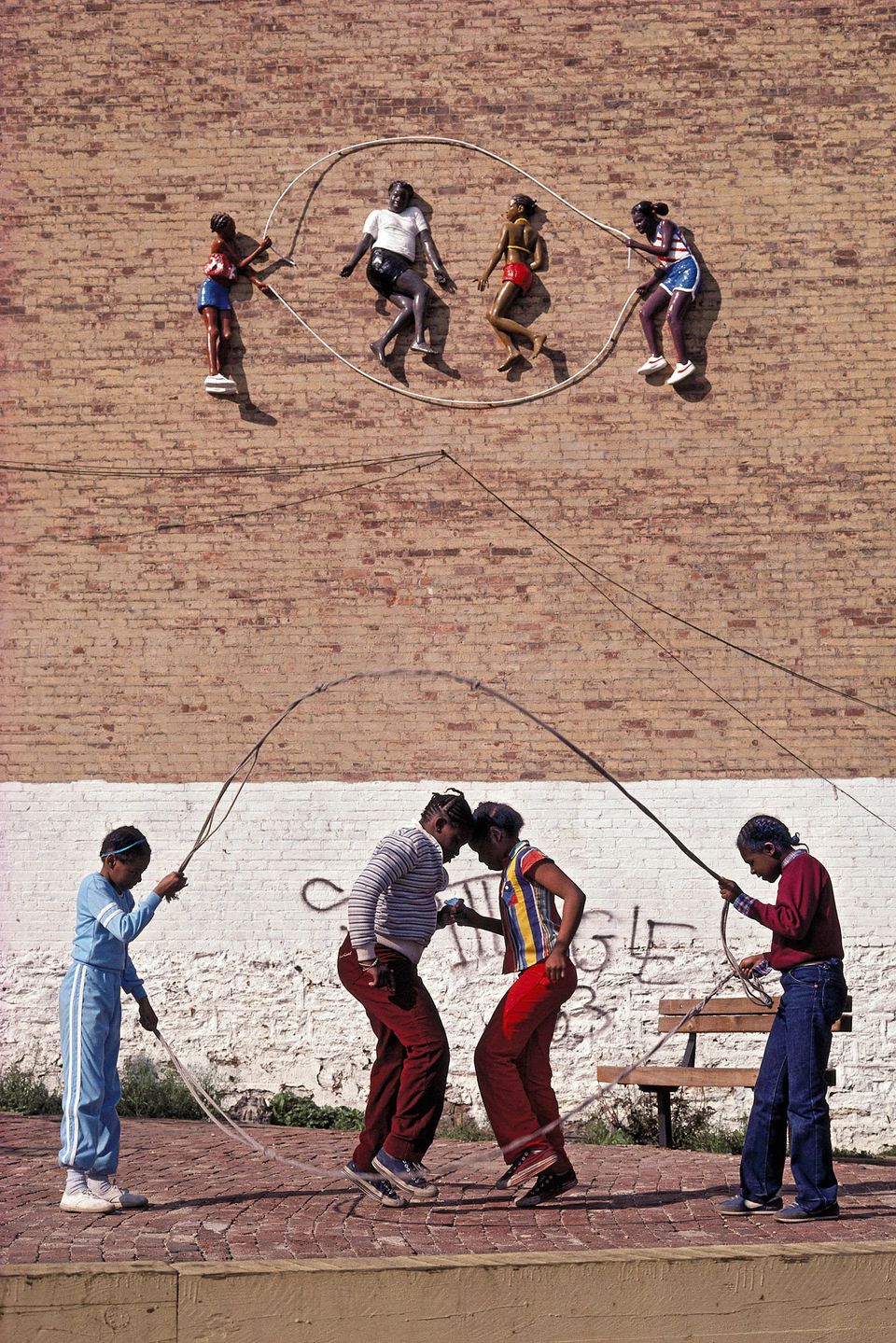
John Ahearn and Rigoberto Torres form a dynamic duo that has been creating public art for years. They make life-size fiberglass castings of locals for use in their art, and to sweeten the deal, each participant gets his or her own casting to take home.
Why do you choose to consistently do public art over other work? Ahearn: It involves [people] without requiring to do anything except observe. They just have to show up.
Tell us about your double-dutch piece in the Bronx. How did that happen? I understand the girls actually lived in that building. Ahearn: We found the girls dancing at a block party on Kelly Street. We casted one each day for four days. […] We had to make very little changes after casting came out. It’ll last forever, but they are acting in that moment.
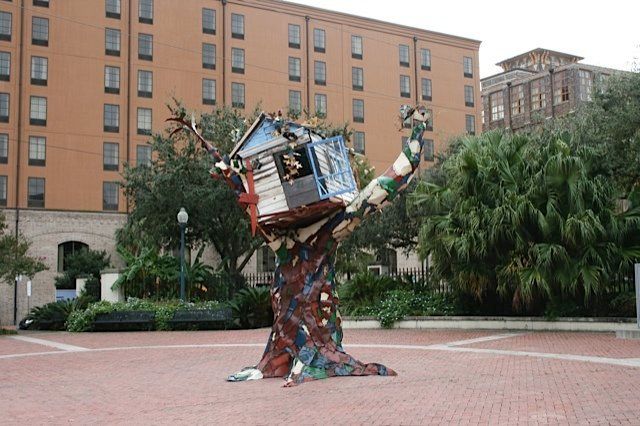
She typically does indoor work but made an exception in this instance. She often uses minute, ephemeral materials in her work.
Tell us about your “Scraphouse” piece in New Orleans. The idea is that the house was blown into the tree [...] When I got back from the evacuation, everything was strangely hybrid.
What’s the difference between displaying your art in a gallery versus in the wild? Galleries tend to highlight the status… [It] gives it a different context than the outdoors. A gallery emphasizes the commodity and what it’s valued at.
What has the reaction been to your piece?People would say, ‘that’s what happened to my house’... I like that people could pour out this feeling as it went up.

Rashida Ferdinand is a fifth generation resident of the 9th ward of New Orleans, making "Mandala" a piece that is very personal to her. When the piece was installed, there was nothing surrounding it, but now there are trees and buildings. The area has, in a way, grown around the art.
What is so special about "Mandala’s" location in New Orleans? I wanted to put it in a place that was visual and significant to the people of the area... It shows the journeys and passageways in life.
How do you account for issues of scale when creating public art? It’s a process. It’s not so immediate as a smaller piece and takes time and consistency.
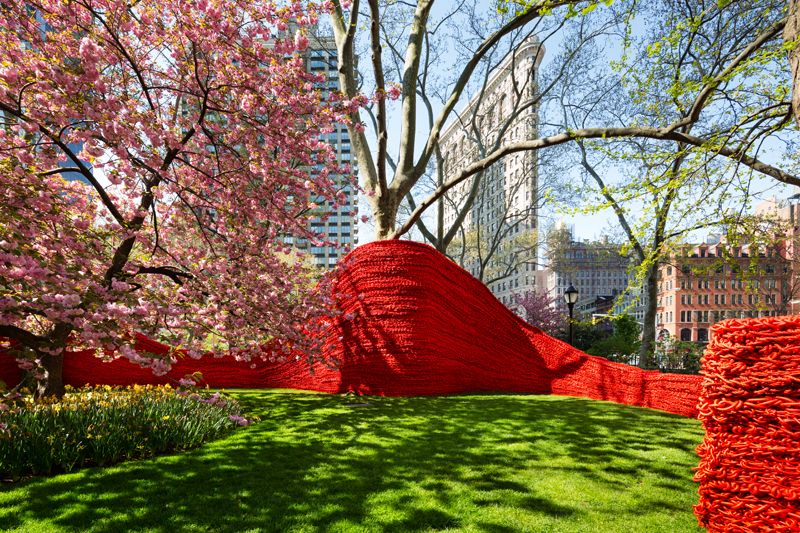
Orly Genger is a New York-raised public artist whose Madison Square Park exhibition covered three separate lawns -- some 4,500 square feet. According to the New York Times, the project was the Madison Square Park Conservancy’s largest to date. The Madison Square Park Conservancy director had come across her work at the 2010 Pulse Miami fair and personally sought her out for this piece.
What is it like to display outdoor art? When displaying outdoor work, you’re showing art [and] not necessarily to an art audience. The people aren’t looking for art when they see your piece. On the other hand, when people visit a museum or gallery, they are looking to check out art.
Why do you choose to work with rope? Rope is malleable. It can change shape with my hands. I can make a hard wall, but it’s also soft. I begin to work on an intimate level and eventually it becomes something larger than myself.
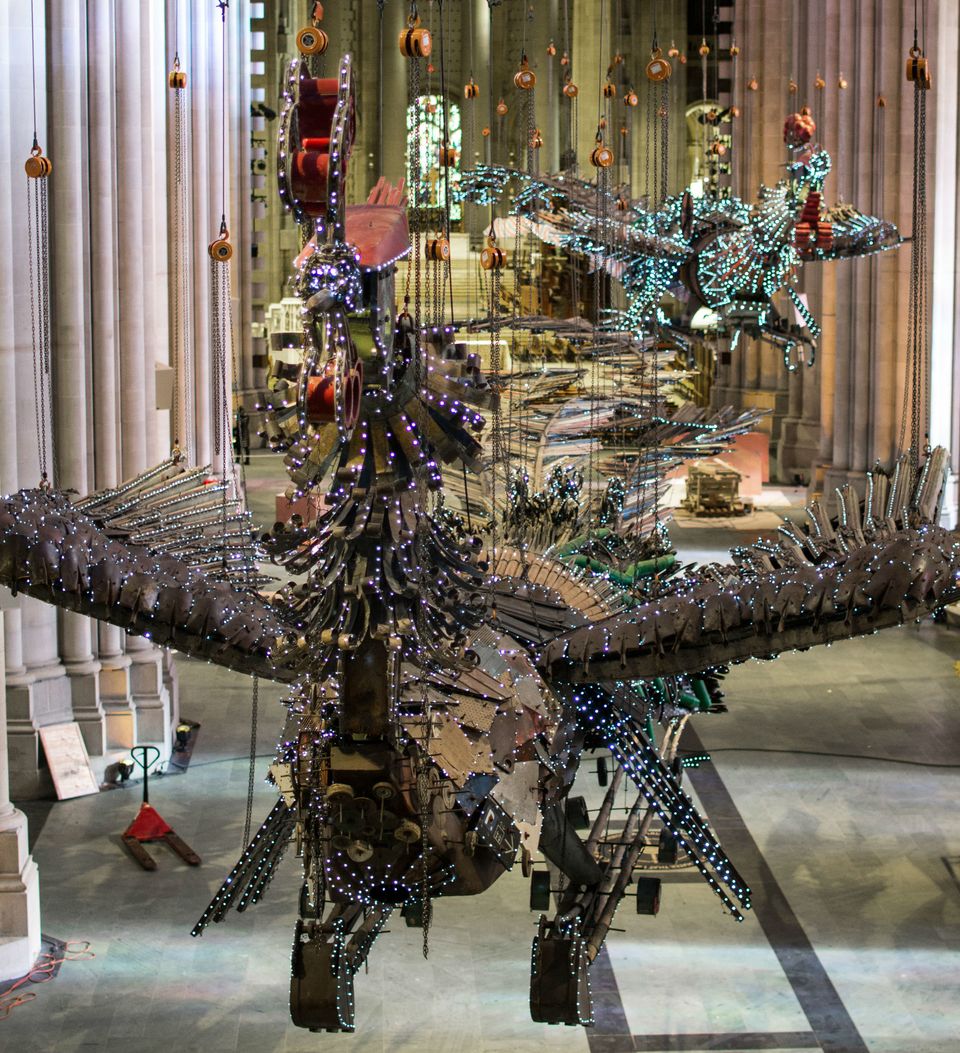
Where have you displayed public art? I usually don’t take on large, permanent public commissions because they take up a significant portion of an important space and possess no quality of necessity. A mailbox, for instance, has a beauty in its necessity, but a large, outdoor sculpture or commission might not appeal to everyone’s tastes or even change over time.
I have done public art outdoor art and I have done a few large commissions, including “Phoenix."
Tell us about "Phoenix." It’s a really beautiful piece in quite a unique location.
So the "Phoenix," which talks about labor and capital and the realities of China today -- its wealth and where it comes from, what it looks like, what it makes possible, and what it causes -- made sense for that space. But wherever it goes -- and there is a saying in Chinese, “you marry a chicken and you start to take after that chicken” -- it somehow forms a relationship with that space.
And the Cathedral Church of St. John the Divine got interested in the project through the show's curator, Judith Goldman, as well as Judy Collins, who is an artist-in-residence. And again, the space was perfect in terms of dimensions, the contrast between the gothic architecture and stained glass windows, the loftiness of the space, and the sacred quiet that it provides in a very dense, gritty and noisy city [which] opens the heavens for the bird's path of flight.
The consideration of creating a work means finding a problem, something that needs to be said or looked at, and then finding the right language to express it. If you can use words to express that thing, then what’s the point of saying it?
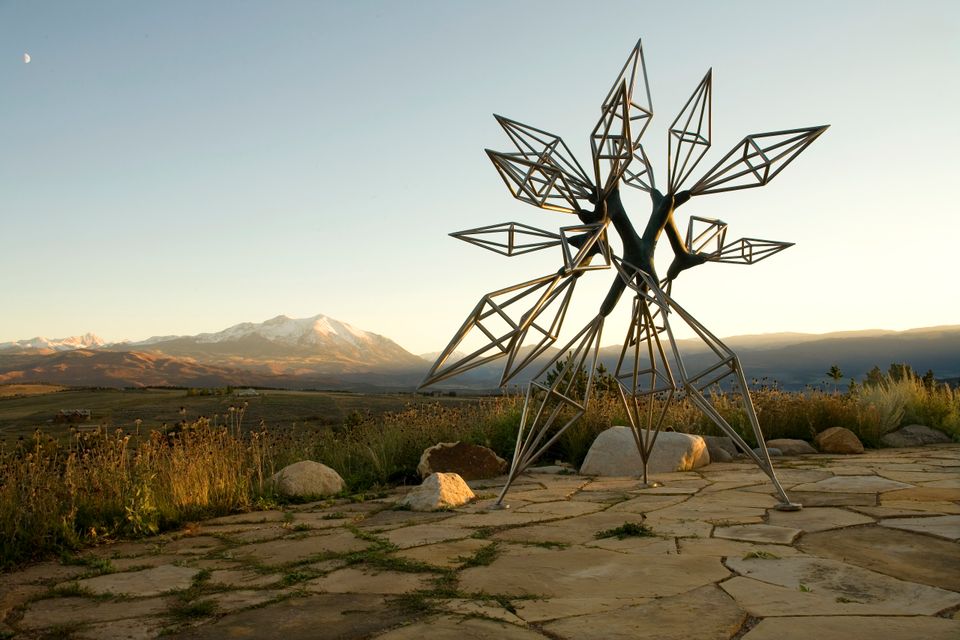
James Surls likes to make art that’s big and physical, which makes outdoor art perfect for his style. He’s been an artist since the '60s and first displayed public art in 1980 in New Bedford, Massachusetts. He is currently working on a piece for his hometown for which he is not getting paid.
Why did you agree to do a piece for free in your hometown of Carbondale, Colorado?Part of my responsibility in the world is to be community-oriented….I’m doing it out of love of community.
Do you think there is a wrong way to interpret your art?I think it’s very easy to misinterpret art. But you have to ask yourself the questions: “What is it?” “What does it mean?” It’s nice to have friends and a spouse that look good, but also have depth and meaning. It’s the same with art.
We love the setting of your pieces in the Denver Botanic Gardens. Tell us a little about it, because it seems off-the-beaten-path. There are three pieces there. [...] They are very faceted and very clean. [...] Diamond shapes have shown up in the work before. Diamond shapes are part of my alphabet. I feel comfortable seeing 10 people seeing it in the right setting over 100 people seeing it in the wrong setting.
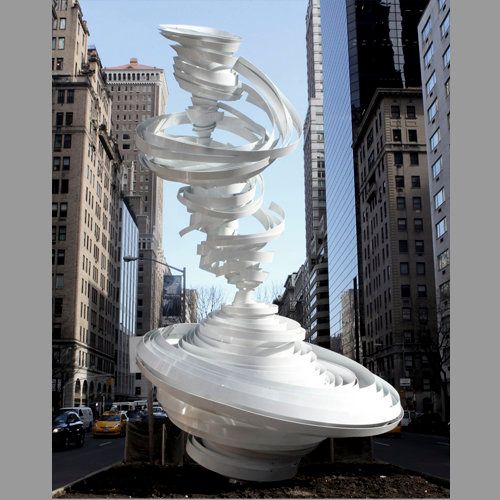
What do your Park Avenue pieces represent?Imagine a kind of wind that blew up Park Avenue. [...] And as it moves up and down the avenue, it visualizes the wind, it would have created this type of movement.
It has to do with wave movement, visualizing things that are invisible.
What was the process of getting your work displayed on one of the busiest avenues in Manhattan?I submitted a proposal to the Fund for Park Avenue at least three years ago. It was was approved then calendared for this summer. It took me one and a half years to build the pieces.